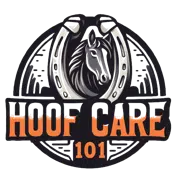A Farrier’s Guide to Managing This Common Hoof Problem
Thrush is one of the most common hoof issues horse owners run into, and if caught early, it’s also one of the easiest to manage. As a farrier, I’ve seen firsthand how a little consistent care goes a long way in keeping hooves healthy. This guide will walk you through what thrush is, how to spot it, treat it effectively, and keep it from coming back.
What is Thrush?
Thrush is a bacterial infection that affects the frog of the hoof, particularly in the grooves (sulci) around it. It thrives in wet, muddy, or unsanitary environments and can develop quickly if hooves aren’t cleaned or maintained regularly.
What Causes It?
- Moisture & Mud: Constant exposure to wet conditions provides the perfect breeding ground for bacteria.
- Poor Stall Hygiene: Standing in urine-soaked bedding or manure is a fast track to thrush.
- Infrequent Hoof Cleaning: When the hoof isn’t cleaned regularly, debris and bacteria can accumulate deep in the grooves.
- Lack of Movement: Horses that aren’t moving around much—especially if stalled often—don’t get the natural cleaning that movement provides.
How to Spot Thrush
- Foul Odor: A strong, sour, or rotting smell is one of the first giveaways.
- Black or Dark Discharge: You might notice gunky material around the frog.
- Tenderness or Sensitivity: Horses may react when the frog is touched.
- Deteriorating Frog Tissue: Infected areas may look ragged, eaten away, or soft.
- Lameness: In advanced cases, thrush can lead to discomfort and limping.
Treating Thrush: Step-by-Step
1. Clean the Hoof Thoroughly
Start by picking out the hoof to remove dirt, manure, and debris.
Pro tip: Always clean from back to front — this helps avoid pushing any debris deeper into the hoof and reduces the risk of injury to sensitive areas.
Follow up with a stiff brush to clean the grooves and surface of the frog.
2. Trim Affected Areas
If there’s any necrotic (dead or damaged) tissue, it should be trimmed away so treatment can penetrate the infected areas. This is usually best done by a farrier or vet to avoid taking off too much and causing pain.
3. Apply a Thrush Treatment
There are several effective commercial treatments available (like Thrush Buster, Kopertox, or No Thrush powder), and some homemade remedies using diluted iodine or apple cider vinegar.
- Apply daily or as directed.
- Be sure to get deep into the grooves of the frog.
- Keep the hoof dry between applications for best results.
4. Manage the Environment
- Clean stalls daily and remove wet bedding promptly.
- Use dry, absorbent bedding like wood shavings or pelletized bedding.
- Allow turnout time on dry ground as much as possible.
- If needed, use hoof boots to protect hooves in muddy paddocks.
5. Prevent Future Thrush
- Pick hooves at least once daily, especially in wet seasons.
- Keep your trimming schedule consistent — long hooves are more likely to trap debris and develop deep grooves.
- Ensure your horse has opportunities for regular movement.
When to Call a Professional
If your horse is lame, the frog is bleeding or very painful, or if home treatment isn’t improving the condition within a week, it’s time to call your farrier or vet. Deep or chronic thrush can lead to more serious infections if left unchecked.
Final Thoughts
Thrush is something every horse owner will likely deal with at some point, but with a little proactive care, it’s nothing to fear. Keep those hooves clean, dry, and on a regular maintenance schedule, and you’ll drastically reduce the risk. If you’re unsure about a case or just want a second opinion, don’t hesitate to reach out — prevention and early treatment are always best.
